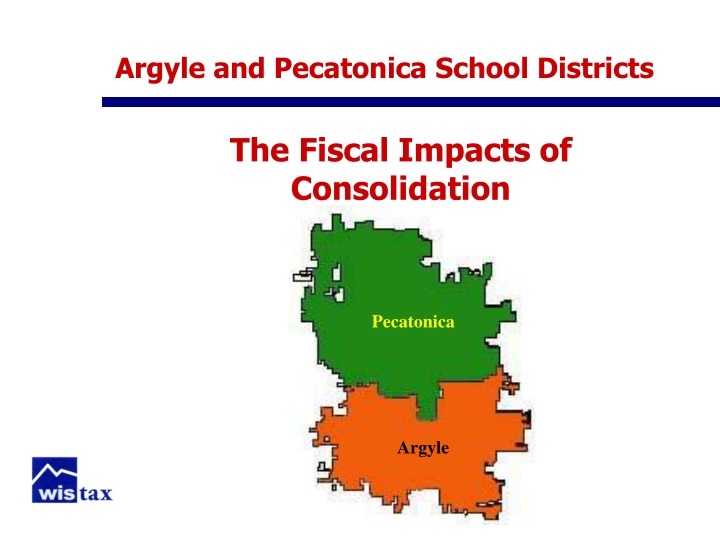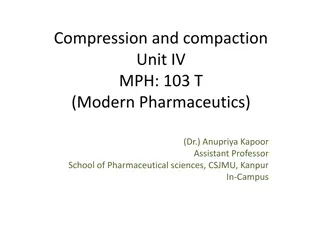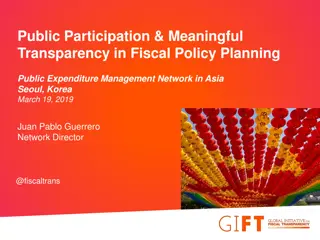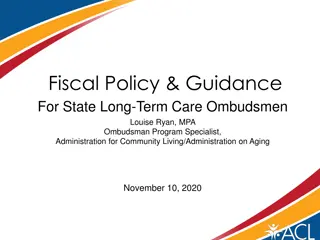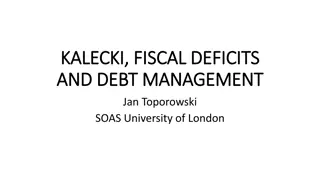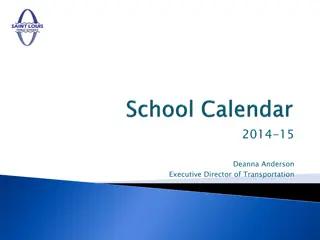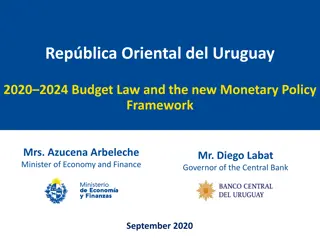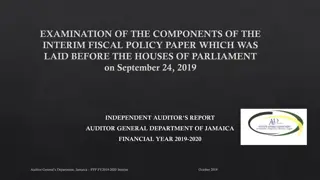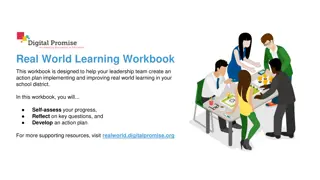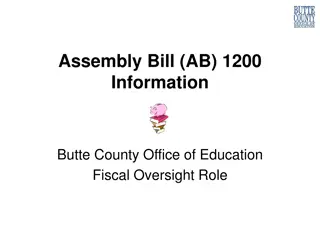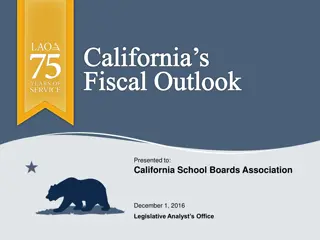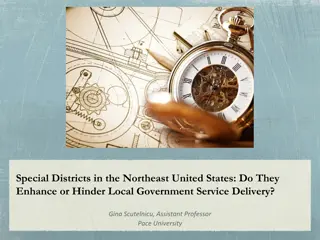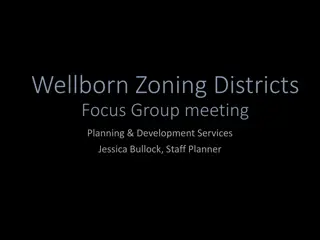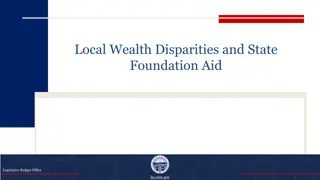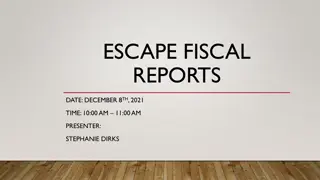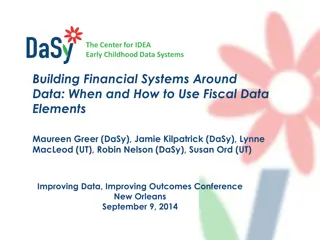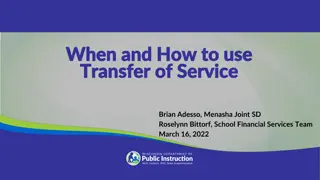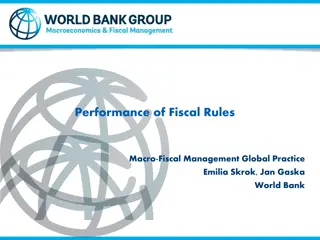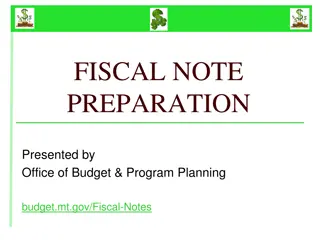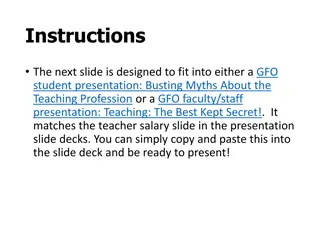Fiscal Implications of Argyle and Pecatonica School Districts Consolidation Study
The study focused on the fiscal impacts of consolidation between Argyle and Pecatonica School Districts, taking into account factors like state subsidies, cost savings, enrollment trends, property values, revenue limits, and tax rates. Various scenarios were explored regarding consolidation incentives and spending strategies to reduce property taxes or hold taxpayers harmless. The study highlighted the financial challenges and opportunities involved in potential consolidation efforts.
Download Presentation

Please find below an Image/Link to download the presentation.
The content on the website is provided AS IS for your information and personal use only. It may not be sold, licensed, or shared on other websites without obtaining consent from the author.If you encounter any issues during the download, it is possible that the publisher has removed the file from their server.
You are allowed to download the files provided on this website for personal or commercial use, subject to the condition that they are used lawfully. All files are the property of their respective owners.
The content on the website is provided AS IS for your information and personal use only. It may not be sold, licensed, or shared on other websites without obtaining consent from the author.
E N D
Presentation Transcript
Argyle and Pecatonica School Districts The Fiscal Impacts of Consolidation Pecatonica Argyle
Background 2007-09 state budget allocated $250,000 to study consolidations Argyle and Pecatonica approached WISTAX Limited funds ($10,000 per study) study fiscal implications
Strategy Assumptions about school finance, enrollments, and property values Fiscal future of individual districts Comparison with new, combined district State subsidies for consolidated districts Cost savings from consolidation?
Assumptions - Enrollments State: up 1.4% over 7 years (through 2015-16) Argyle: decline from 335 to 291 (-13%) Pecatonica: decline from 443 to 402 (-9%) 500 1,000,000 457 Pecatonica 443 402 Pec./Arg. Enrollment State Enrollment 400 900,000 State 353 336 300 800,000 291 Argyle 200 700,000 2007 2008 2009 2010 2011 2012 2013 2014 2015 2016
Assumptions Equalized Values Argyle and Pec value changes fluctuate widely Growth forecasted slightly below state avg. Effect of farmland valuation is hard to predict 12% Pecatonica 10% State Argyle % Chg. Eq. Value 8% 6% 4% 2% 0% -2% 01 02 03 04 05 06 07 08 09 10 11 12 13 14 15 16
Scenarios 1. No consolidation 2. Consolidation District does not spend incentives District spends incentives to reduce property taxes District spends some incentives to hold taxpayers harmless
1. No Consolidation: Revenue Limits Revenue limits to grow < 2%/year Costs growing 4% or more spending cuts? Pecatonica - Growing 1.8% per year $8,000,000 Argyle - Growing 0.5% per year $6,000,000 Revenue Limits $4,000,000 $2,000,000 $0 2004 2005 2006 2007 2008 2009 2010 2011 2012 2013 2014 2015 2016
1. No Consolidation: Tax Rates Rates depend mostly on prop. values and state aid Rates will be higher if referenda needed & passed Argyle $16 Pecatonica $14 $12 $10 Tax Rate $8 $6 $4 $2 $0 2004 2005 2006 2007 2008 2009 2010 2011 2012 2013 2014 2015 2016
Other Pecatonica Issues Hollandale School costs Heating system Roof New school? Other capital costs
Issues: Scale Economies I? Examining district spending shows likely savings of 5%-10% $16,000 Pecatonica $14,000 Spending/Student $12,000 Argyle $10,000 Consolidated? $8,000 0 500 1000 1500 2000 2500 Enrollment
Issues: Scale Economies II? District savings estimates $480,000 teaching staff $165,000 administration $80,000 custodial $25,000 food service $45,000 in additional transportation costs $750,000 cost to remodel schools $705,000 operating savings (about 6%)
Issues: Consolidation Incentives I State bumps aid factors 10% Five years Amount depends on spending Estimated incentives average $621,000/year ($3.1 million total, 5 years)
Issues: Consolidation Incentives II Total incentive is about 1/3 of consolidated revenue limit Save it all create endowment? Spend a portion (earnings or earnings and some principal) new programs or reduced property taxes? Spend it all buy down property taxes or spend on current/new programs Save it all? Save some, spend some? Spend it all?
Consolidation: Three Scenarios Assume 5% (conservative estimate) cost savings due to scale economies District does not spend additional state aids (endowment?) District uses additional aids to reduce property taxes District uses some aids to hold taxpayers harmless
Consolidation: Revenue Limits Revenue limits are the same under all scenarios Consolidate limit grows 1.2% per year $10,000,000 $8,000,000 Revenue Limits $6,000,000 Argyle/Pec revenue limit sums $4,000,000 $2,000,000 $0 2004 2005 2006 2007 2008 2009 2010 2011 2012 2013 2014 2015 2016
Consolidation: Buildings Under a consolidation, the Hollandale school would likely close Approximately $750,000 needed to remodel current facilities Could use part of the incentive aid, or borrow to fund (we assume borrowing; adds $0.10 to $0.15 to tax rate)
Tax Rates, Scenario 1: Endowment With state incentive $$ invested, consolidated tax rate is average of Argyle and Pecatonica Consolidated district puts $3.6 million in fund balance ($3.1 million incentive aid and $0.5 million from economies Pec. Argyle $14 Consolidated $12 $10 Tax Rate $8 $6 $4 $2 $0 2010 2011 2012 2013 2014 2015 2016
Tax Rates, Scenario 2: State Incentives Reduce Property Taxes Lower property taxes in each of first five years Incentive $$ spent , but district rolls over revenue cap space $0.5 million in scale economies to fund balance Pec. $14 Argyle Consolidated $12 $10 $8 Tax Rate $6 $4 $2 $0 2010 2011 2012 2013 2014 2015 2016
Tax Rates, Scenario 3: Taxpayers held harmless Argyle taxpayers no worse off; Pec taxpayers save Some state incentive $$ spent, but district saves rev. cap space Save $2.2 mil. in first 5 years; after 5 years, ?? Pec. $14 Argyle Consolidated $12 $10 Tax Rate $8 $6 $4 $2 $0 2010 2011 2012 2013 2014 2015 2016
Summary of Findings Both districts face difficult decisions Costs growing faster than revenue caps Cut spending? Referendum? Repairs/new school (Pecatonica) With consolidation, revenue caps still grow slower than costs (i.e., doesn t solve declining enrollment) Consolidation could generate cost savings (5% or more) State provides $3 million + in additional aid Hollandale likely closes under consolidation Other issues (e.g., programming, transportation, etc.)?
Wisconsin Taxpayers Alliance: 77 Yearsof Nonpartisan Research and Citizen Education www.wistax.org www.wistax.org
What if no scale economies (5% savings)? More spending, more state general aid Slightly more state incentive aid No scale economy savings to fund balance Same options as previously outlined, bottom line only slightly different
